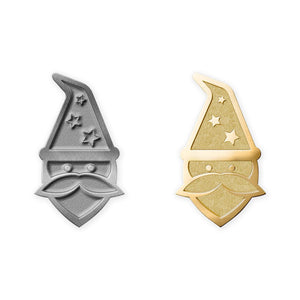Once you step outside, the world can become a giant outdoor classroom. Birds sing, squirrels chatter, and trees stand tall like watchful guardians. But trees aren't just pretty: they give shade on hot days, provide food and homes for animals, and clean the air we breathe.
Learning to identify different trees can be like cracking a secret code of nature. Each walk you take outside turns into a treasure hunt, filled with clues hidden in leaves, bark, and seeds. So grab your walking shoes, a notebook, and maybe a magnifying glass: it's time to pin your nature walk and become a tree detective!
Do's and Don'ts
Before you head out, it's important to know the rules of safe and respectful exploring.
Do:
-
Bring an adult buddy: Exploring is always more fun and safe when you have company.
-
Dress smart: Long pants, sneakers, and socks help protect your legs from bug bites or scratchy plants.
-
Pick the right season: Summer and early fall are best because leaves are full and easier to identify.
-
Observe critters at a distance: If you see a bird's nest, squirrel, or even an ant parade, watch from a distance without disturbing them.
Don't:
-
Touch twigs ending with groups of three leaves: Poison ivy can cause a nasty, itchy rash. Remember: Leaves of three, let it be!
-
Harm trees: Don't peel bark, carve into trunks, or break branches. Trees need their healthy "skins", just like you do.
-
Snack on plants: Even if seeds or berries look tasty, some are poisonous. Bring your own safe trail snacks instead.
-
Collect without permission: Parks and forests protect plants, so only take leaves or samples if it's allowed.
Following these do's and don'ts keeps you safe while exploring and protects the trees and creatures that call them home.
Be Tree Smart
Imagine you're a detective solving a mystery.
Each tree you meet has special clues. Some clues are big, like whether it has pine needles or broad, flat leaves. Others are less obvious, like whether the bark peels or stays rough. You figure out a tree's identity by putting all the clues together.
Trees can also be grouped into two huge families:
-
Deciduous trees (like oaks and maples) lose their leaves in autumn, trading them for new ones in the spring. They often grow wide, flat leaves.
-
Coniferous trees (like pines and spruces) keep their needles all year and often grow cones.
Knowing these basics already makes you "tree smart", even before you start your walk.
Things to Look For
Here are the main detective clues you'll look for when trying to identify trees:
-
Leaves: Are they needle-shaped or broad? Smooth-edged or jagged? A maple leaf, for example, looks like a pointed hand, while an oak leaf has rounded lobes.
-
Bark: Look closely at the trunk. Is the bark bumpy, cracked, smooth, or peeling? Birch trees have thin, white bark that peels like paper, while pine bark looks rough and scaly.
-
Flowers and Cones: In spring, some trees bloom with colorful flowers. Others grow cones that hold seeds.
-
Fruit and Seeds: Oak trees drop acorns. Maple trees send out "helicopter" seeds that spin as they fall. These little treasures can tell you a lot about the tree.
-
Tree Shape: Look at the crown, or top of the tree. Is it shaped like a cone, a big round ball, a pointy pin, or a graceful umbrella?
-
Habitat: Trees grow best in certain places. A willow might love the edge of a pond, while a pine is happy on a sunny hillside.
The more details you notice, the easier it is to spot differences and identify the tree correctly.
How to Pin Your Trees: Easy Ways to Identify Them
Every time you recognize a new tree, imagine pinning it like a badge on your explorer's map. Over time, you'll collect a forest of pins from your discoveries!
Common Trees
Here are a few tree friends you're likely to meet on your nature walks:
-
Oak: Large, strong trees with lobed leaves and acorns that squirrels love.
-
Maple: Famous for colorful fall leaves and helicopter seeds.
-
Pine: Tall evergreens with bundles of long, pin-like needles and cones.
-
Birch: Slim trees with white bark that peels in thin sheets.
-
Willow: Graceful trees with drooping branches, often found near water.
-
Cherry: Blossoms in the spring with sweet or sour fruit in summer.
But remember, while these examples are common in most places, different regions have different kinds of trees for you to discover and identify.
Tools to Use
Tree detectives need the right gear:
-
Notebook and Crayons: You can make leaf rubbings by placing paper over a leaf and coloring gently. You can also draw the tree's shape.
-
Magnifying Glass: Look closely at veins in a leaf or patterns in bark; there's always cool stuff to see.
-
Camera or Phone: Snap photos instead of picking leaves. Later, compare your pictures with a tree guide to learn more about them.
-
Tree ID Apps: Some apps let you upload a picture of a leaf or bark and suggest what tree it might be.
You might also want to bring along some other things, like a cap for sunny days or a water bottle to stay hydrated.
Fun Tree Facts
-
The tallest trees, coast redwoods, can grow taller than a 30-story building!
-
The oldest known tree is a bristlecone pine that's over 4,800 years old. That's older than the pyramids in Egypt!
-
One large tree can supply a whole day's worth of oxygen for four people. That means trees really do help us breathe.
-
Trees can "talk" to each other underground. Their roots share signals and even food through a network of fungi, kind of like a secret forest internet!
You can find even more tree facts here:







































